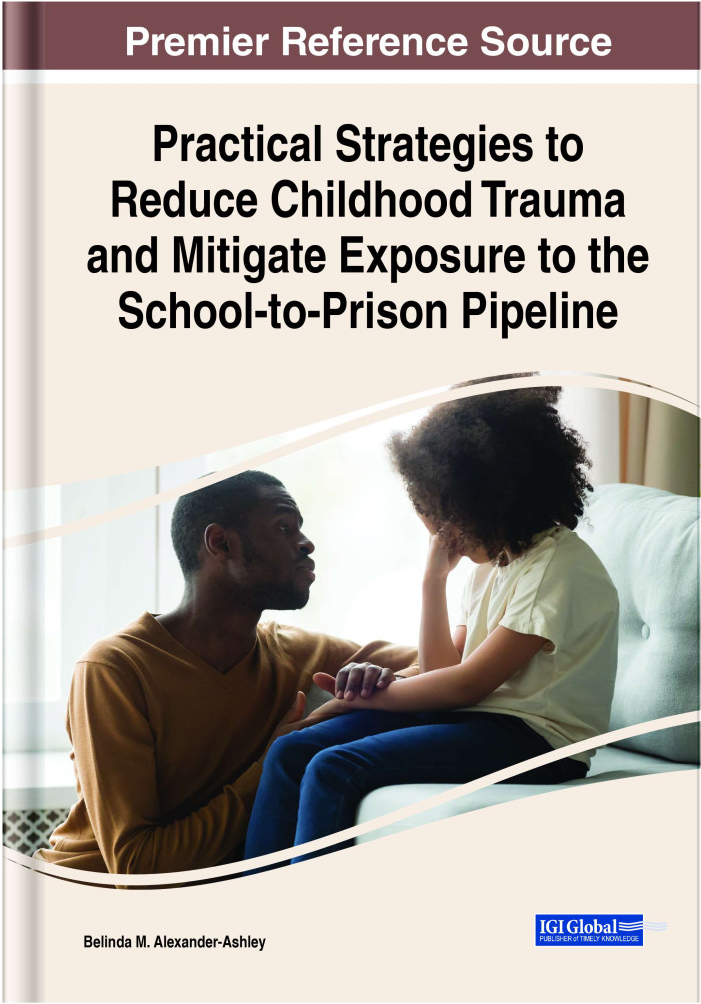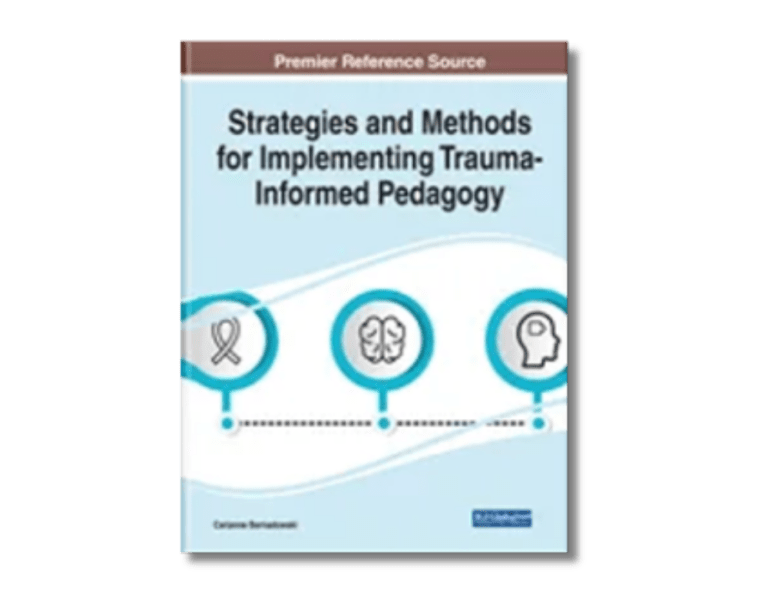Practical Strategies to Reduce Childhood Trauma and Mitigate Exposure to the School-to-prison PipelinePremier Reference Source
Belinda Alexander-Ashley, PhD., edited this book and authored two chapters titled, “Practical Strategies for Higher Hope Learning Spaces” and “Integrating Family History Into the Post-Pandemic Elementary Learning Space: Reducing Childhood Trauma”.

Chapter 7: Practical Strategies for Higher Hope Learning Spaces: Reducing Childhood Trauma in a Post-Pandemic Era
ABSTRACT: Childhood trauma was found to increase the risk of aggression and disruptive behavior in classrooms. The disruptive behavior risks exposure to the school-to-prison nexus, a result of inequities in zero tolerance and exclusionary policies. The coronavirus disease (COVID-19) pandemic disrupted the world’s learning systems leaving in its wake feelings of anxiety, depression, fear, uncertainty, and hopelessness. This exacerbated the existing trauma experienced by students. Thousands of studies involving hope theory has advanced to a science with predictable outcomes and progressively more benefits for dealing with childhood trauma. The eight recommended practical strategies for higher hope include acknowledging that hope takes work, understanding the tenets of hope theory, emphasizing a personal approach to student needs, protecting educators from vicarious trauma, listening more and talking less, developing ambassadors of hope, and creating partnerships of hope focused on positive experiences, effective communication, and resilience to reduce the effects of childhood trauma.
Chapter 8: Integrating Family History Into the Post-Pandemic Elementary Learning Space: Reducing Childhood Trauma
ABSTRACT: The COVID-19 pandemic highlighted existing inequities because of zero tolerance and exclusionary policies that disproportionately impacted the world’s learners living in poverty, people of color, and those experiencing special challenges. Under the existing educational system, marginalized students often feel devalued and without a voice. Integrating family history and genealogy into the elementary school learning space provides a methodology and framework that focuses on the historical conditions that promote healthy dialogues and sustain discourses connecting to other historical events. The process of creating positive experiences with family history, improving the classroom environment, effectively communicating, rapport and trust building, and strengthened socio-emotional skills reduce childhood trauma. The six recommended strategies include introspection and reflection, navigating parallel time periods, valuing genealogical tools, encouraging an environment of hope, normalizing authenticity, and transforming the learning environment.


